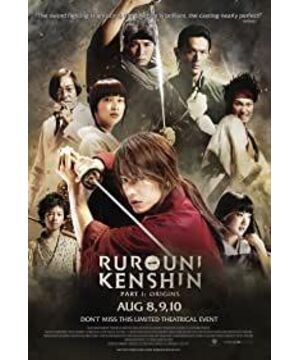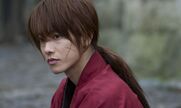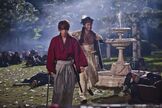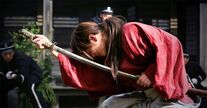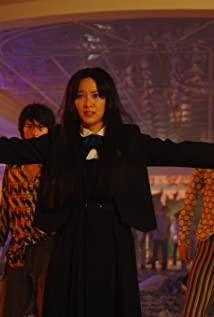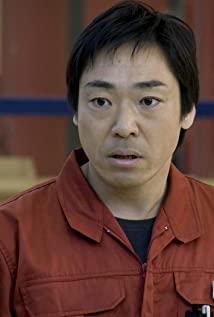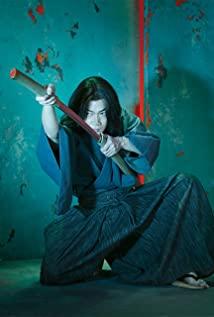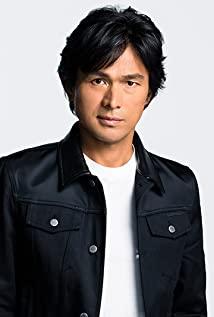Kenshin is an executioner who fully unleashes his unconscious violent, slaughter and anti-social tendencies in troubled times, because this unconscious fits his conscious exactly—in order to overthrow the old world and build a better one. In the new world, all sacrifices are reasonable - so his consciousness gives legitimacy to the unconscious (this is also the psychology of most terrorists and revolutionaries), but the consciousness still comes out to question the legitimacy of the unconscious - killing is true. right? Is it possible to take the lives of others at will for the sake of revolution and to usher in a new era? (This kind of inner struggle runs through the "Remembrance")
After the Meiji Restoration, in the face of a brand-new government, continuing to indulge the unconscious slaughter is contrary to the norms of the new society (Kim Shin's consciousness agrees with the new government established by him), At this time, Kenshin's consciousness and unconsciousness parted ways. Consciousness oppresses the unconscious, and the superego oppresses the id. The result of the compromise between the two is: Kenshin changed his name (from Hiicun Ba Dao Zhai to Hiicun Kenshin), vowed not to kill, and switched to "reverse-edged sword". Wandering in the rivers and lakes, acting as a chivalrous person.
The balance between Kenshin's consciousness and unconsciousness has been maintained for ten years. The first blow to break this balance is Kenshin's imprisonment due to Yoshiyuki, where he meets Saitoichi, the former head of the third group of Shinsengumi. This person was Jianxin's old enemy many years ago, and then he brought Jianxin to meet Mr. Shanxian, a senior official of the army (the former boss of Jianxin). The two of them aroused Jianxin's memory of killing the Quartet in the past and were suppressed for many years. The unconscious also looked up at this time. The second blow was seeing the widow in the rain kneeling in front of the corpse of her slain husband and crying bitterly. This directly reminded Kenshin of the scene where Shedeba was kneeling in front of Qingli's corpse and wept bitterly after the assassination of Shedeba's fiancé, Qingli Mingliang fourteen years ago. . Painful memories are also accompanied by reminiscences of the hidden pleasures unleashed by the unconscious in the past. The third blow is that Blade Guard kidnapped Kaoru Kamiya, forcing Kenshin to return to the original executioner and fight to the death.
In fact, Blade Guard and the thugs under Opium Shangguan Liu were all samurai before the Meiji Restoration (similar to Kenshin and Saitoichi), and before their unconscious had a formal outlet (relying on killing for a living, participating in war, etc.), but the establishment of the Meiji government deprived them of this official outlet, so they hated the new government, hated this "poor and powerless peace era", and had to rely on Guanliu in order to survive. As Saito said: "We live by the sword, die by the sword, and there is no other way for us." Peace is the greatest mortal enemy of the samurai class.
Like these fallen samurai, Kenshin's unconscious is also hostile to the Meiji government, because the human unconscious is always anti-government and anti-order. The unconscious, which has been suppressed for ten years, has been stimulated several times, and has reached the brink of eruption. The unconscious must find a way out for itself, otherwise the whole person will not reach a state of balance. The first way out is to start killing again. This way was blocked by Kamiya Kaoru's self-help and Kenshin's superego, so Kamiya Kaoru acted as the second way for Kenshin's unconscious release.
The sword is the murder weapon, and the shape of the sword symbolizes the male sexuality. Kenshin's sword either kills or is sheathed, and Kamiya Kaoru becomes Kenshin's scabbard. Only when Kenshin's "sword" is wrapped in Kamiya Kaoru's gentle warmth can he once again maintain the balance between consciousness and unconsciousness. Kamiya Kaoru has become a breakthrough for Kenshin's unconscious venting. The unconscious tendency to kill is transformed into sexual desire and released through sexual intercourse. Sexual pleasure makes up for the lack of murderous pleasure. As a result, Kenshin did not change back to the former executioner Hiicura Drawing Sword Studio, and maintained the kind image of Rurouni Kenshin.
View more about Rurouni Kenshin Part I: Origins reviews


